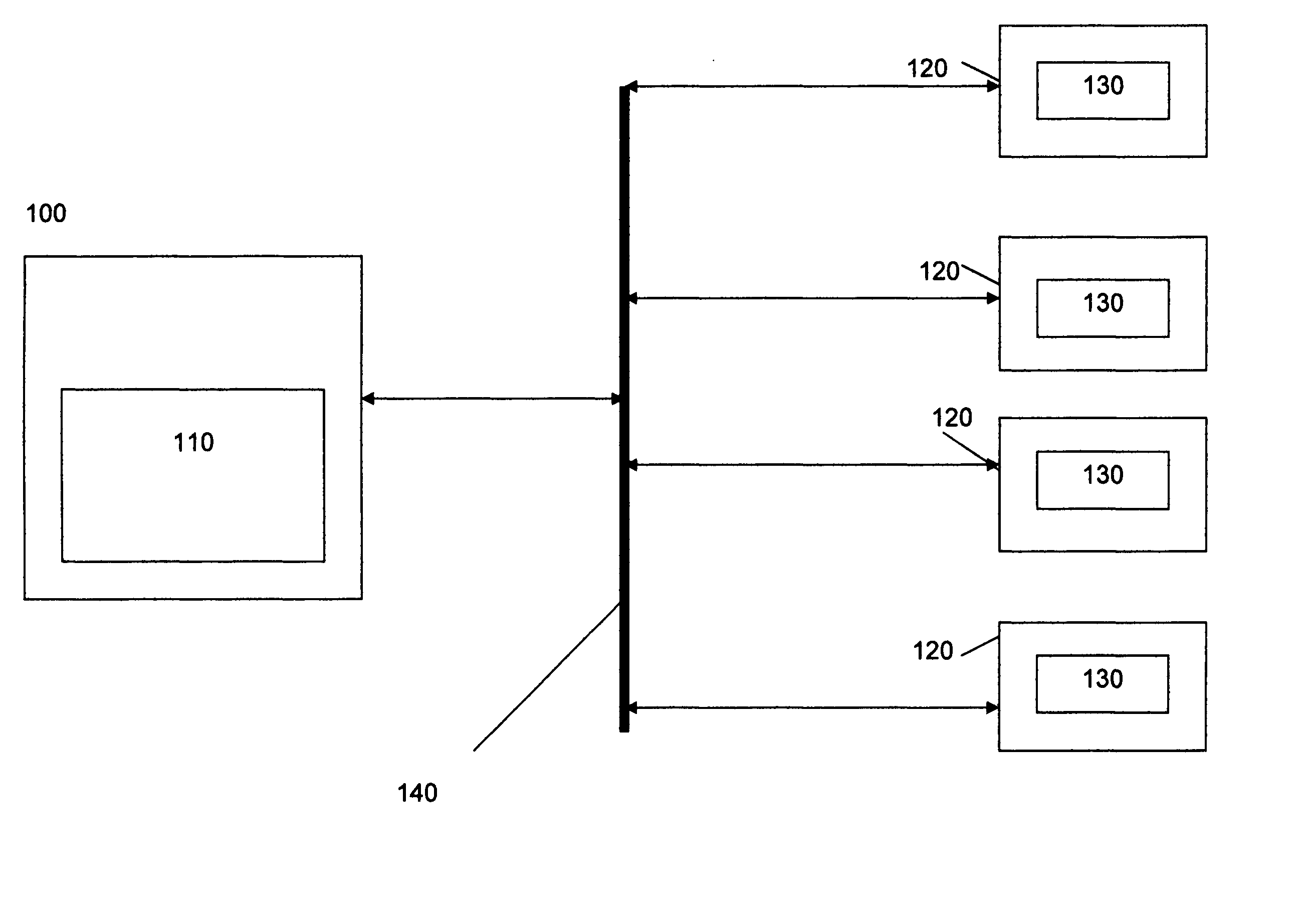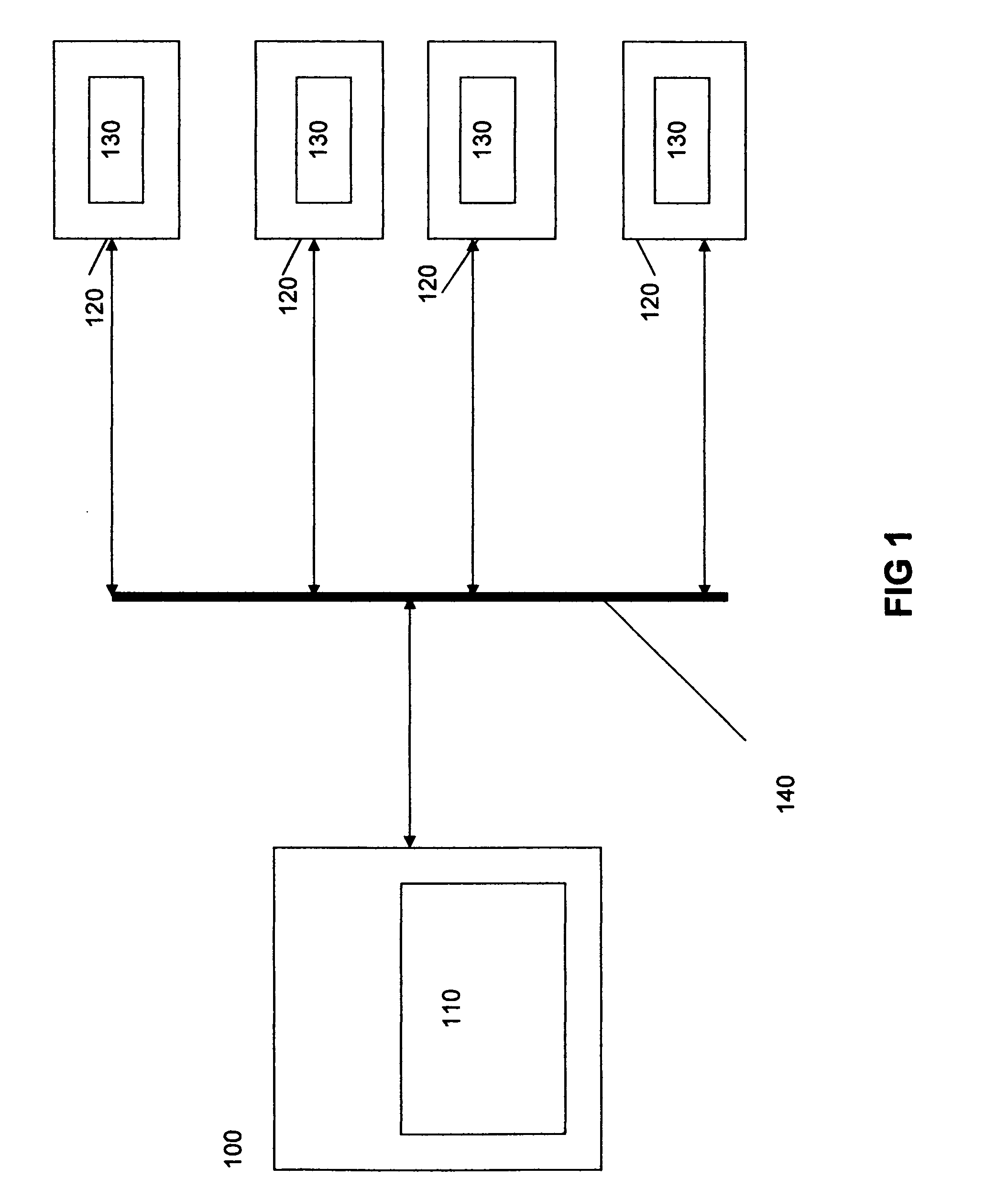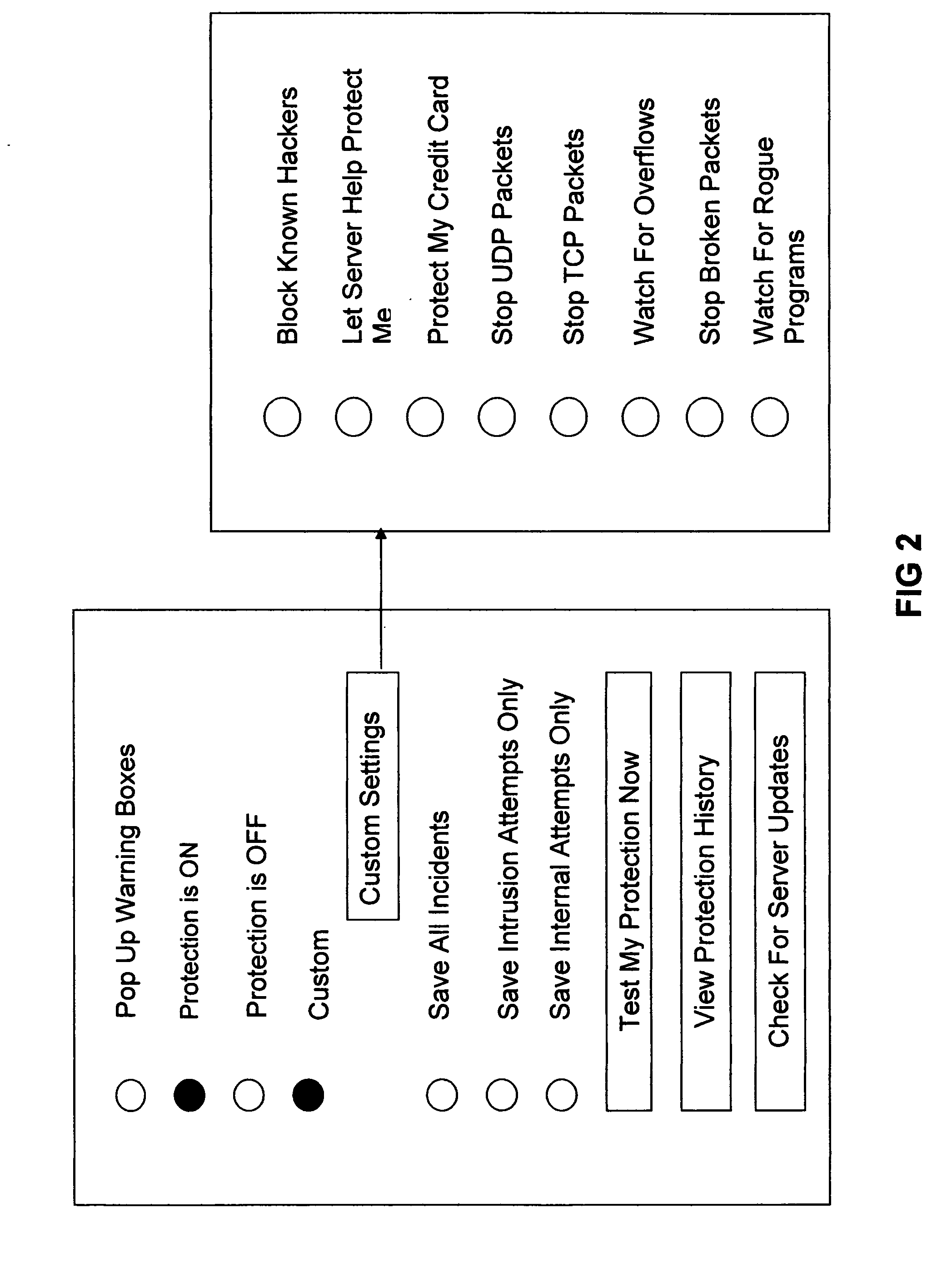Systems and methods for detecting and preventing unauthorized access to networked devices
- Summary
- Abstract
- Description
- Claims
- Application Information
AI Technical Summary
Benefits of technology
Problems solved by technology
Method used
Image
Examples
Embodiment Construction
[0046]FIG. 1 is a block diagram showing the server 100 having a central control device 110, which is connected through a network 140 such as the internet, to a plurality of user devices 120. An application 130 resides / downloaded on the user devices 120 interacts with the central control device 110 as well as with other user devices 120 on the network.
[0047] The application 130 provides for a variety of activities available for the operator user devices 120 where the application 130 resides for detecting and preventing unauthorized access to computer networks.
[0048] The application 130 on the user devices 120 can interrogate the user device 120 to identify other applications that are potentially harmful. These harmful applications are not merely restricted to Trojan horses, worms, unknown security vulnerabilities, known vulnerabilities, software vulnerabilities, rogue applications, zombie attacks, pc hijacking, and peer-to-peer file sharing as can be found in prior art such as viru...
PUM
 Login to View More
Login to View More Abstract
Description
Claims
Application Information
 Login to View More
Login to View More - R&D
- Intellectual Property
- Life Sciences
- Materials
- Tech Scout
- Unparalleled Data Quality
- Higher Quality Content
- 60% Fewer Hallucinations
Browse by: Latest US Patents, China's latest patents, Technical Efficacy Thesaurus, Application Domain, Technology Topic, Popular Technical Reports.
© 2025 PatSnap. All rights reserved.Legal|Privacy policy|Modern Slavery Act Transparency Statement|Sitemap|About US| Contact US: help@patsnap.com



